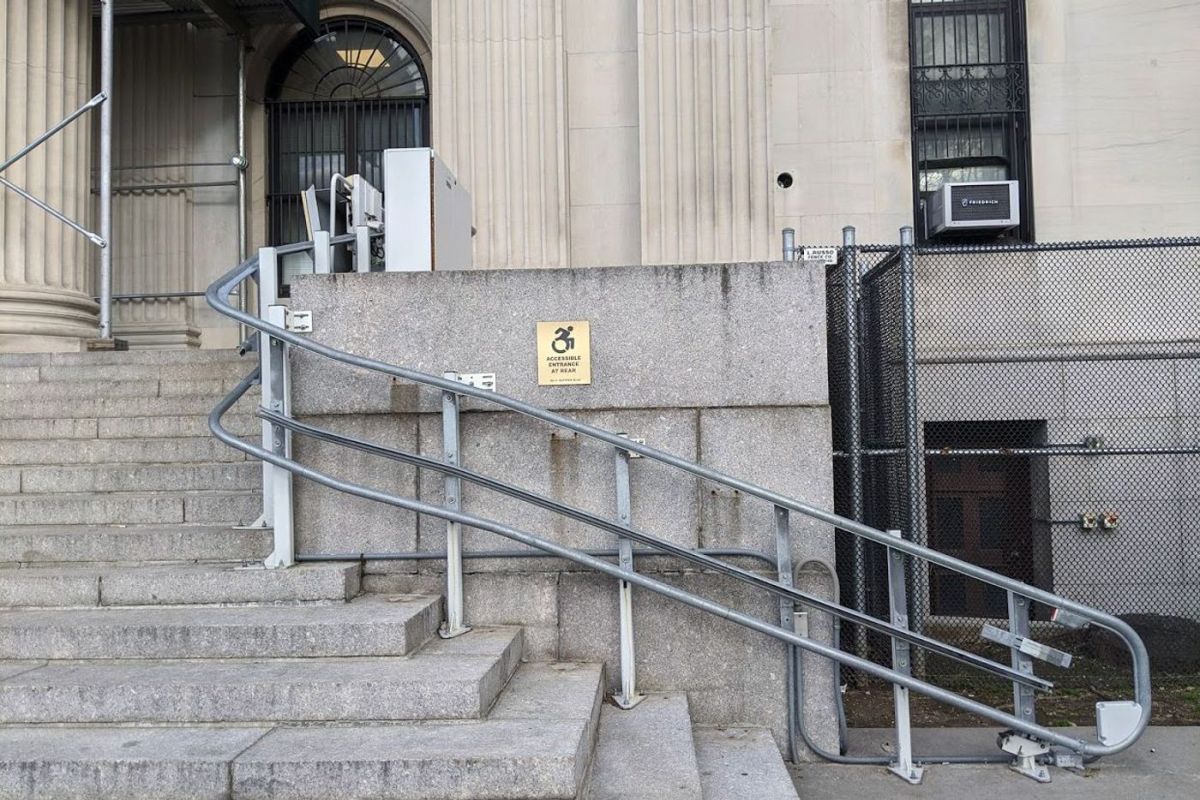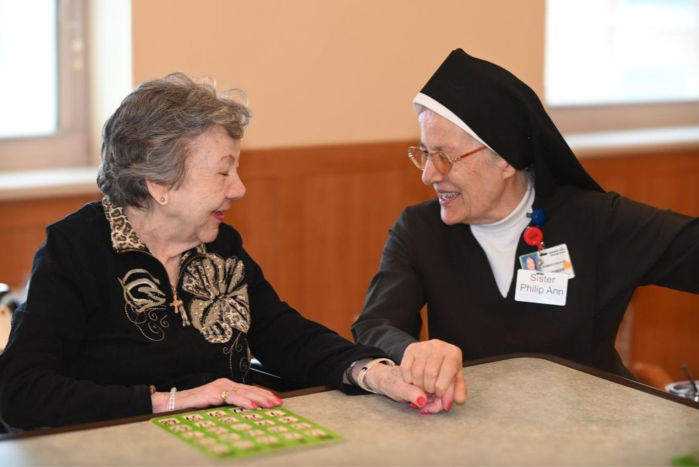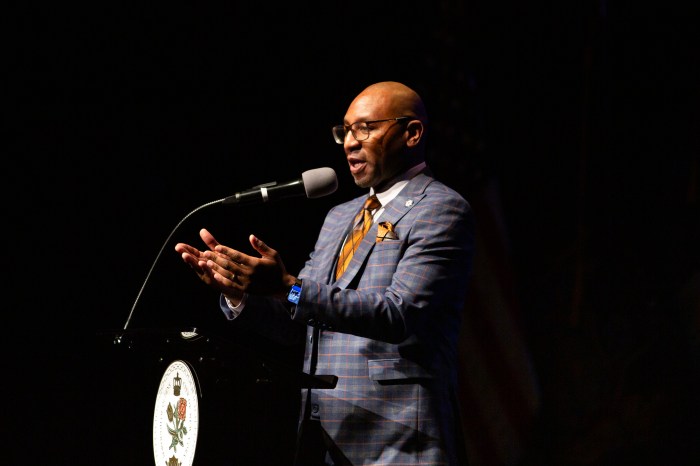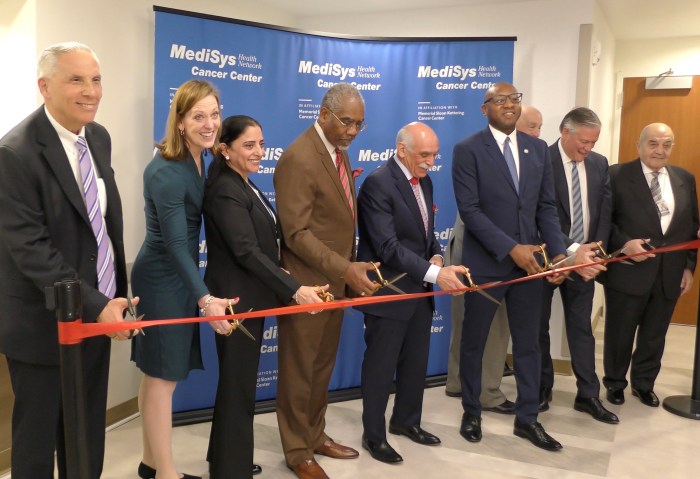This story was originally published on Feb. 19, 2020 by THE CITY.
By CHRISTINE CHUNG, THE CITY
The wheelchair lift at the Queens Supreme Courthouse in Jamaica doesn’t get used — but it’s not broken.
City and state officials can’t agree on whose responsibility it is to operate the lift on Sutphin Boulevard. State court officers say they don’t even have the key needed to turn it on.
The standstill over the lift emerged during an investigation by THE CITY that found some of Queens’ half-dozen court facilities present physical barriers to people with mobility issues seeking access to the legal system.
Among the obstacles:
• Steep ramps leading to basement floors
• Metal barricades blocking wheelchair-accessible entrances
• Push buttons that don’t open doors
• Departments within courthouses that are effectively off-limits to people with limited mobility
Court users and advocates say these conditions add up to discrimination against New Yorkers with disabilities and warp their experiences with the justice system.
“When they’re there to ask government to help resolve a problem, nobody should have to battle their way into a court,” said Christina Brandt-Young, a managing attorney with the nonprofit Disability Rights Advocates.
“It’s not appropriate to treat people with disabilities in that way during stressful times in their lives,” she added.
Broken Lift or Broken System?
Queens Supreme Civil Court, built in 1936, sits atop more than a dozen concrete steps. A metal railing for a mechanized platform lift — for people with wheelchairs, walkers or other issues — borders the right side of the stairs.
But when a reporter for THE CITY recently pushed the button near the lift, a court officer gave instructions to enter the building through an alternate back entrance and wouldn’t say why the machine wasn’t accessible.
The state Office of Court Administration contends the city is responsible for operating the lift. Lucian Chalfen, a spokesperson for the agency, said that court officers do not even have a key to activate the lift.
Meanwhile, the city Department of Citywide Administrative Services, which manages courthouse facilities, insists court officers are charged with helping people use the lift.
Court officers say the lift has often been out of order. Dennis Quirk, president of the New York State Court Officers Association, said it was fixed roughly seven weeks ago, after being broken for about nine months.
DCAS disputes that.
“The lift has been operational except for a two-week period last year as a result of vandalism,” said Nick Benson, a DCAS spokesperson. “Any suggestions to the contrary are simply false.”
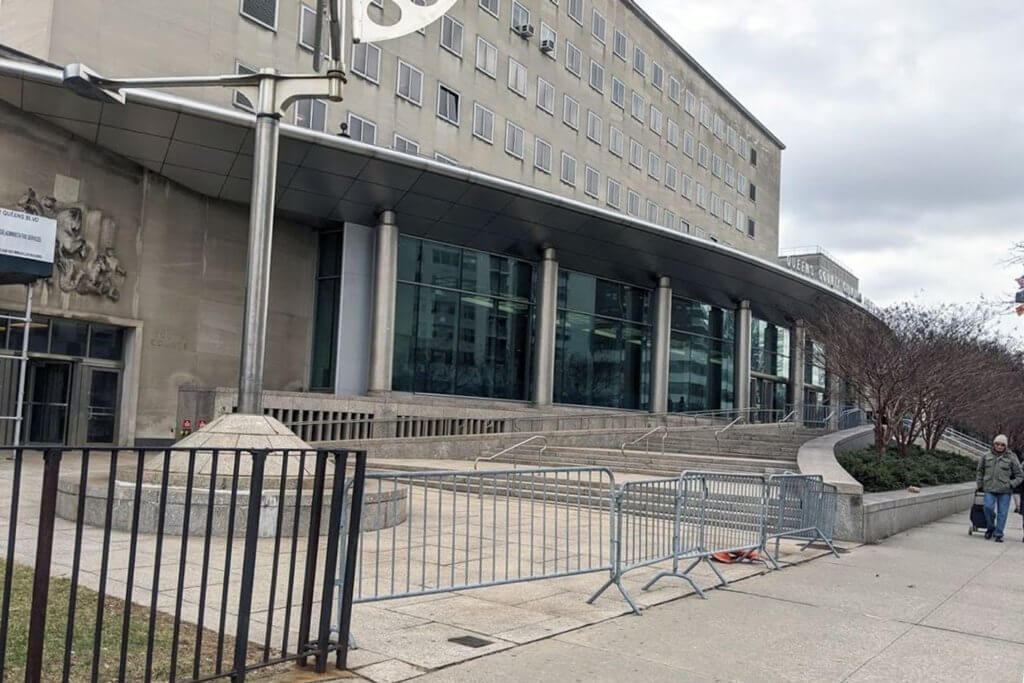
Chalfen said that the lift was “installed by DCAS without any input from the court.” He contended the machine has various issues, including taking roughly two minutes to travel up the stairs and not being level with the top step.
“We were advised that DCAS would operate the lift, and that has not been occurring since the installation of the lift,” Chalfen added.
The lift dates to 2004, according to Department of Buildings records.
A Troubling Message
Signs posted near the lift encourage people to instead use an accessible entrance at the back of the building.
That back entrance is inside an active parking lot staffed by uniformed court officers. An officer told THE CITY they escort anybody who enters the parking lot into the building.
That requires going through two sets of doors and down a steep ramp that deposits visitors into the courthouse basement, where there’s an elevator.
Kathleen Collins, a retired attorney who uses a wheelchair, said she still remembers feeling unsafe when she traversed the ramp nearly seven years ago.
“I could never navigate that ramp by myself,” Collins said. “They haven’t changed anything.”
She said the courts are sending a pointed signal to people with disabilities by pushing them to accept being treated differently. The message is to “not make waves,” she added.
Under local, state and federal laws, however, courthouses must provide full and equal access to people with disabilities.
After inquiries from THE CITY, Benson said that even though the court system controls building access at Supreme Civil Court, including the lift, DCAS staff will step in to assist people who need to use it.
“In order to ensure this entrance is accessible to all, DCAS will train its on-site fire-and-life safety personnel to operate the lift in the event OCA staff is unavailable to do so,” he said.
‘I Feel Like a Baby’
Queens has six court facilities, half of which challenge New Yorkers with mobility issues.
At Queens Family Court, at 151-20 Jamaica Ave., much of the main entrance is blocked by a metal barricade.
Over at the Queens Criminal Courthouse, the area leading to the accessible entrance is cordoned off. People who want to use the entrance must somehow flag down a court officer stationed inside the building.
Once they go up the ramp, the automatic button for the entrance door is broken, THE CITY found during a recent visit.
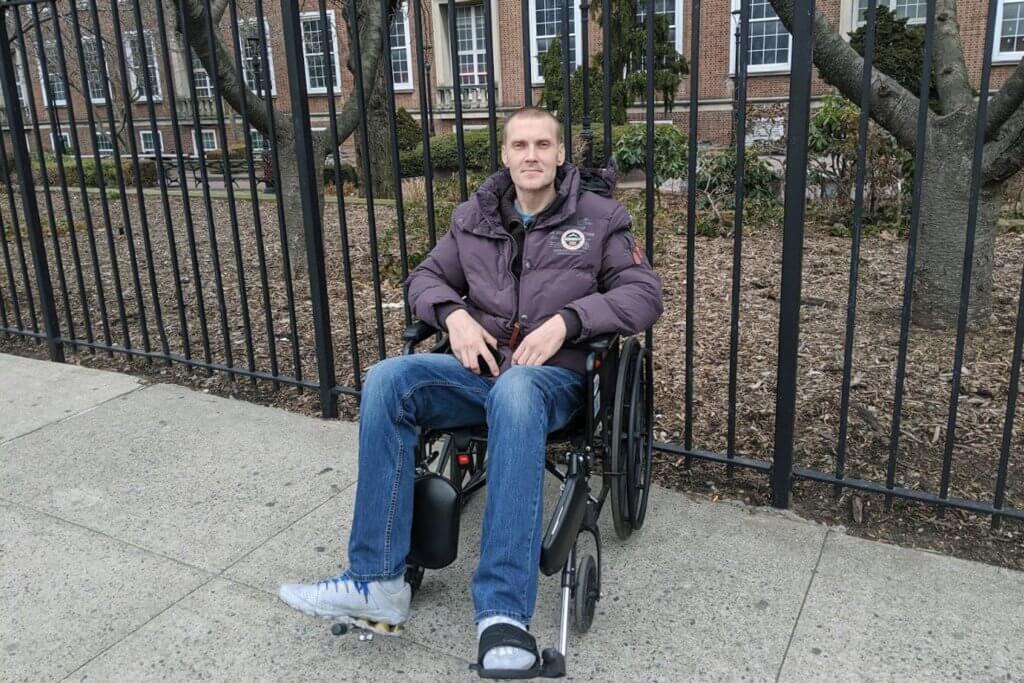
Sebastian Kruszewski, 32, of Maspeth, visited the Criminal Court building late last month in a wheelchair after undergoing a recent operation.
“Unless you catch anyone’s attention, no one comes to move it,” he said of the blockade. “I feel like a baby. I should be able to enter the building on my own.”
The clerk’s office in Criminal Court is located below a set of stairs.
Quirk described the situations at Queens Supreme Civil and Criminal courts “horrendous.” He added that the barriers placed additional responsibilities on court officers who are already charged with securing the facilities.
“The New York State Court system is not a respectful place for anybody,” said Quirk. “They don’t make it a nice place for people to come to.”
Benson denied the Criminal Court building is inaccessible.
“The security barriers erected by the Office of Court Administration do not make the Queens County Supreme Criminal Court inaccessible,” he said. “Any suggestions to the contrary are flatly false.”
Obstacles to Justice
Advocates and attorneys have long said that accessibility issues are pervasive in New York City courts.
In March 2015, the nonprofit New York Lawyers for the Public Interest reviewed 10 courthouses in the five boroughs and concluded that people with disabilities did not have “meaningful access to justice in a most fundamental way.”
The report detailed offices that can only be reached with stairs, holding pens incapable of fitting wheelchairs and inaccessible bathroom stalls.
“These ad hoc ‘accommodations’ stigmatize people with disabilities, making them reasonably believe they face a choice of either creating a commotion and drawing attention to themselves or not participating at all,” the report read.
NYLPI attorney Maureen Belluscio said the report spurred negotiations to improve courthouse access.
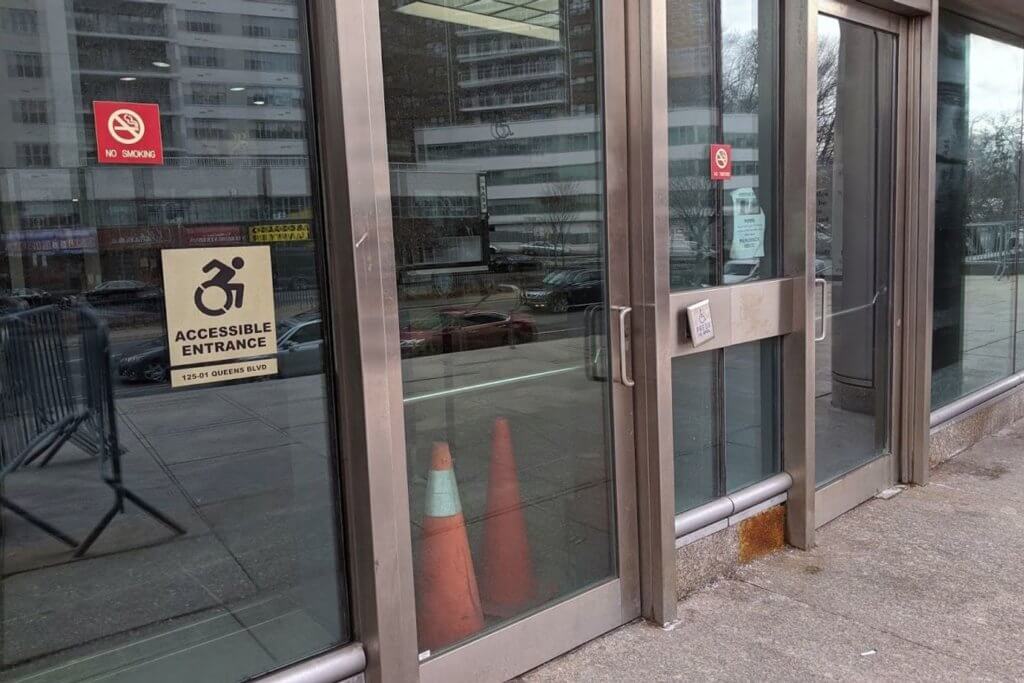
In 2016, the city sought an architect to conduct a five-year $12 million survey of all DCAS-managed courts and fix anything out of compliance with the federal Americans with Disabilities Act. That includes entrances, automatic door-closers, ramps, handrails and inclined lifts. This process is ongoing, Belluscio added.
Benson said that the city selected the Manhattan-based architecture firm Ronnette Riley, which is “currently providing surveying and design services to improve accessibility at court facilities managed by the city.”
He also referred THE CITY to the Mayor’s Office of Criminal Justice and the Office of Management and Budget for further information about the city’s “master plan” for “operations of the court facilities.”
The Office of Management and Budget and the Mayor’s Office of Criminal Justice did not respond to requests for comment.
Advocates, meanwhile, are pressing for more immediate solutions to serve New Yorkers navigating the courts daily.
“It’s important to show people have equal access to justice and that access has to be both literal, where they can get to the court, and also what happens when you get there,” said Christopher Newton, an attorney with Queens Legal Services.
This story was originally published by THE CITY, an independent, nonprofit news organization dedicated to hard-hitting reporting that serves the people of New York.

